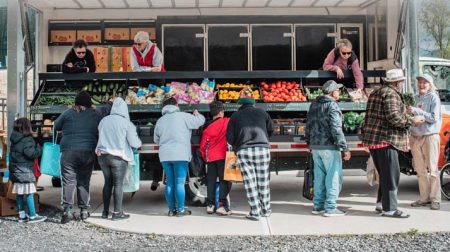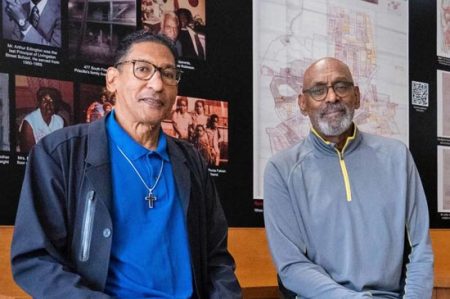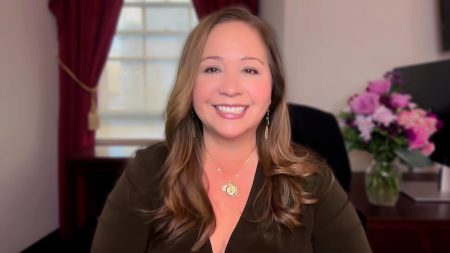For the Love of the Game

by Johnnie Grant
It was 1945 at age 11 that Billy Gardenheight, Sr. first developed an interest in the game of golf.
Money was scarce for everyone at the end of World War II. For school-aged children there was little or no income, and caddying at local golf courses was a way to earn money. “My mother was very apprehensive about me caddying, because golf had no meaning to her. I told her that I would earn $1.25 to $2.00 for carrying golf bags for 18 holes, so she reluctantly allowed me to go,” said Gardenheight.
The next morning Gardenheight took off from school, caught the Jack
Bryson bus with friends Arizona and Isaiah Williams, and went to caddy
at the Biltmore Forest Country Club. Little did he know that it would
be a laborious and cumbersome experience for him at such a young age.
“As I learned to caddy, I had to deal with some racially verbal abuse
from the golfers, but as I carried the golf bag(s), I began to study
the art of the game of golf. After school was over and homework was
done, the neighborhood boys and me would gather throughout the
neighborhood of East End.
“It was there on the streets of Dirt Eagle, George Washington
Carver, Knob, Latta, Hildebrand, Beaumont, Hazzard, Clemmons, and
College Streets, we fashioned our own fairways,” says Gardenheight.
“You could hit a full five-iron up the hill, and a seven- or eight-iron
coming back down. Mountain St. School (now the Asheville Board of
Education Building), was our PGA Track. Most of us had a five- or
seven-iron that we got from the golfers we caddied for as gifts – and
yes, some irons were the result of ‘caddie-revenge.’ If you were ever a
caddie – you would know what I mean!” mused Gardenheight.
At 15 Gardenheight started playing a good solid game of golf,
shooting a score in the 70s. “The older guys would get me out of school
to play as their partner in money matches. If we won, we would split
the winning, and if we lost they would pay. The pressure of losing was
not an issue for me – this was my strength. I simply was hooked on
playing golf; the money just made it that much more exciting!”
After the Supreme Court Ruling in 1954 on public parks,
Asheville’s Municipal Golf Course was to be opened to both black and
white golfers. “Blacks could only play on Mondays when the course
wasn’t being used by the white golfers. But, after that ruling I got up
the following Sunday morning, called my friend Boyce Layton, and we
went to play 18 holes of golf. Although we were not attacked, it was
not a pleasant experience for either of us. In fact – on some holes, it
was downright frightful!”
 |
| Billy Gardenheight, Sr Tournament Director, Skyview Golfer’s Association. Photo: Urban News |
The next morning the local newspaper headline read: “Negroes
showed up to play golf,” which started a frenzy that had the City of
Asheville in an uproar about the golf course. During this course of
events, the word spread quickly that the local public Municipal Golf
Course would be sold. “Shortly afterwards,” says Gardenheight,
“attorney Reuben Dailey, Mr. Charles Collette and myself made an
appearance before Asheville City Council. Attorney Dailey was very
eloquent in his resounding appeal citing the reasons the golf course
should not be sold. After the presentation, Mayor Earl Eller stated,
‘Don’t you boys worry, we’re not gonna’ sell that golf course – go on
back home.’”
Shortly thereafter, word spread around town that blacks could
play every day. However, lack of acceptance still caused some black
players to be quite apprehensive, and in some instances they showed a
real fear of personal harm, and were threatened with losing their jobs.
“It was a real scary feeling – just to play the game of golf,” said
Gardenheight.
“In 1954, I began to tour the golf circuit and participate in
black golfing tournaments in Winston-Salem, Atlanta, and Washington,
D.C. I can remember the prize money averaging around $300 to $500 for
the professional division. Needless to say, this is what convinced me
to turn professional, since I was consistently shooting in the 70s. In
1970, I relinquished my professional status after getting a good steady
job,” said Gardenheight.
Over the years change did come to Asheville as African American
golfers continued to play at the local public course. Two of the
greatest and most renowned local and circuit golfers were Harry Jeter
and John Brook Dendy. Gardenheight recounts the play-by-play action of
the tournament plays of these two men.
“In 1979, Harry Jeter shot a yet-to-be-broken course record at
Asheville’s Municipal Golf Course. It was a blazing 62, from the blue
tees at 6,480 yards. Jeter had a bogey on the 13th hole of his record
setting round, to go with birdies on the 2nd, 4th, 5th, 6th, 7th, 9th,
10th, 14th, 17th, and 18th holes. That same year he entered nine
tournaments, and won seven first place finishes in a row,” recalls
Gardenheight.
Pro golfer John Brooks Dendy (now deceased), a Morehouse College
graduate, earned the title of “National Open Champion in 1937 at
Jacksonville, Florida. Starting the round with a hole in one on a par
four hole, the second hole – an eagle three, and the fourth – with a
birdie, to date that fete has not been. I fondly remember all of the
great African American golfers of this region, and throughout the
country,” recalls Gardenheight.
As Mr. Gardenheight gazed around the inside of the club house at
the Municipal Golf Course, he shared some words of encouragement he
wanted the local youth to know: “As I look back on my experiences and
ponder the future, the potential for young African-American golfers is
tremendous. In my era, we HAD no outlet and had to start as caddies –
it is there we learned the rules of the game, and developed the
discipline to play.”
“Now with the high-tech equipment and well-maintained courses,
there is no doubt that any up-start can excel in the world of golf.
Don’t like the game of golf? Become a Greens Keeper, there are so many
fulfilling and lucrative opportunities in the business of golf – and
the limits are boundless. For our youth have a golden opportunity, and
it is incumbent upon us that we continue to show the way by developing
a support system that will leave a legacy.”








